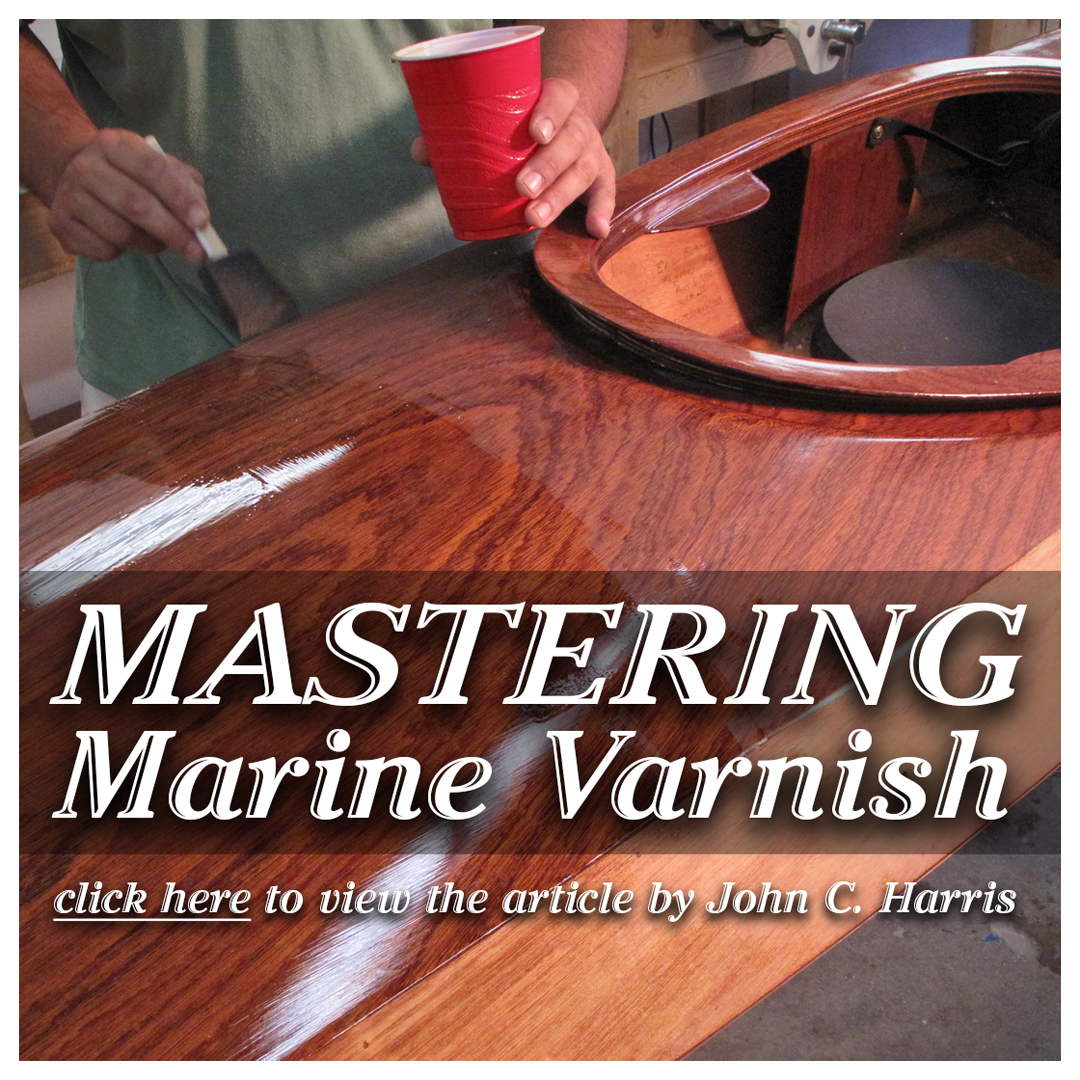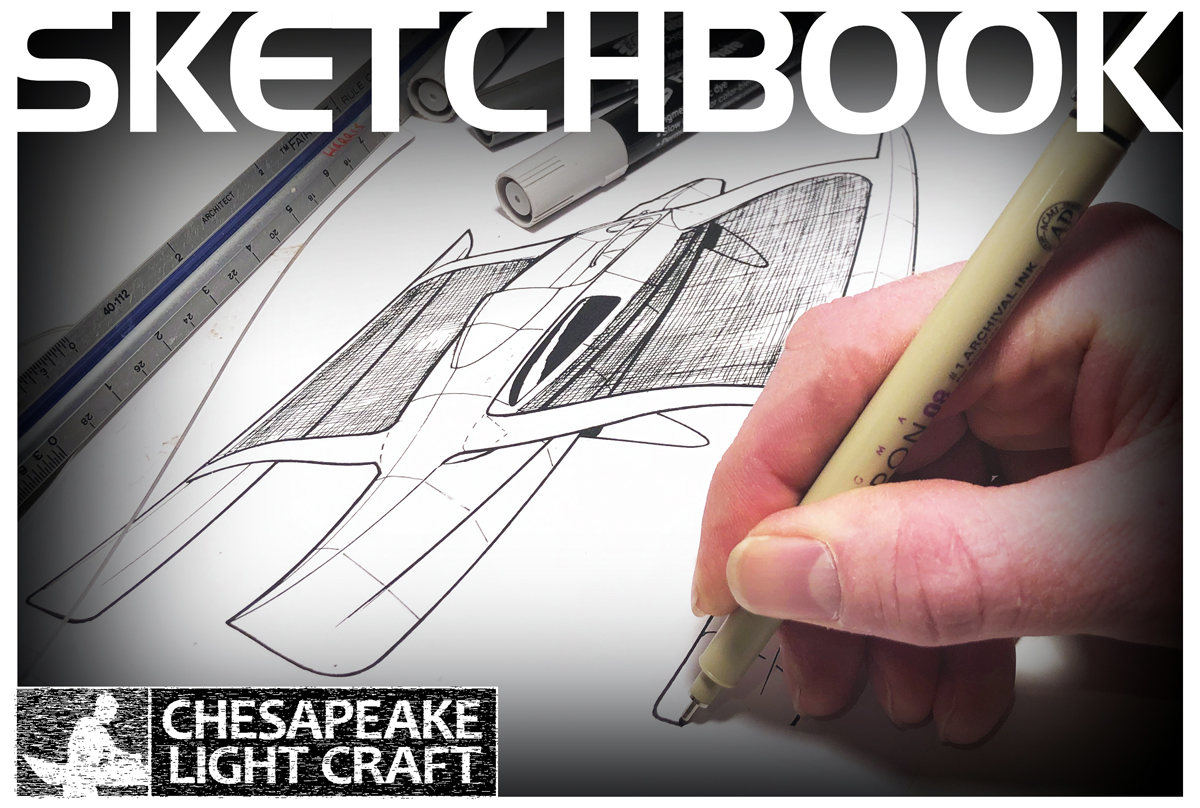Builders' Forum |
|
| ↓ Scroll to Last Comment ↓ | Forum Guidelines | Builders' Forum | |
How long to wait between wet sanding and adding epoxy?
I've been fine tuning the sanding of my hull for many days. Finally filled in the last big hole (between the bottom panels at the stern) and am ready to sand it smooth. Once the hull is dry, I'll finally be ready to put the FG cloth on and add epoxy.
I've wet sanded most of the hull thus far (I regret not using the random orbital to sand the chines since it went A LOT faster when I decided to finish up with it). I opted for wet sanding to (1) keep the dust down and (2) make it harder to destroy a chine or sand through a veneer with the more aggressive random orbital sander. It typically takes just an hour or two (max) for the water to disappear from the surface of the wood panels after wet sanding, but how long should I wait before applying epoxy? Obviously it's a function of the humidity (I'd guess the yak is feeling 70% RH since it's my attached garage in the very humid Seattle area). I'd obviously hate to end up with wood rot and/or mold as a result of trapped moisture, but I'm also getting a bit impatient! Maybe I'll bring it into the house (50% RH) after wiping it down with denatured alcohol to accelerate the process.
10 replies:
RE: How long to wait between wet sanding and adding epoxy?
I won't try to answer how long to wait, I'd just say to wait as long as it takes for the wood to be "dry" as defined by the environment in which it exists. Which is probaly two hours or so.
But your post has me confused. The only time I "wet" wood when sanding (making furniture or boats or gun stocks or otherwise) is to pass a wet cloth lightly/rapidly over the surface (water or alcohol will work) to raise the wood fibers so they can be sanded off. This is called "whiskering." That provides better grain definition and a smoother first coat of epoxy or varnish. But the wood never gets very wet in the process, only lightly on the surface, which quicly dries.
It sounds like you are wet sanding bare wood. I'm not aware of a time where you'd ever want to wet sand bare wood unless working some special application like a very hard wood and trying to get some mirror-like finish on something like a music box.
If you are going to glass over the okume wood, dry sanding with 150 grit is fine - heck, 100 grit is probably OK, though you might loose a little grain definition. If you can connect your sander to a vac, that's how you keep dust down. No need to get really fine sanding prior to glassing, just get the wood very well shaped/smoothed/flattened - but not trying to get a smooth finish, as you would if you were going to directly varnish the bare wood.
Somebody can correct me if I'm not seeing something clearly here - but the only time you'll want to be wet sanding is when/if you are really trying to get a fine finish on your final coats of epoxy or varnish. I never even wet sand the epoxy - again, I have a vac attachment, but 150 or 180 grit is good enough for finish sanding the epoxy. Only when I get to the final couple of coats of varnish or paint and shift to grits 240 or higher do I do any wet sanding. I consider the purpose of wet sanding as being done with fine grit paper to help lube it and keep it from clogging. If it didn't get hot or clogged, even fine sandpaper probably wouldn't need to be wet (but it does, so it does).
RE: How long to wait between wet sanding and adding epoxy?
Thanks for the lengthy and insightful reply, Bubblehead. I probably shouldn't call it "wet sanding" since that probably connotes getting things very, very wet. I'd say what I've done has been ~halfway between that and what you're describing. I have been wetting the paper or in some cases doing a light spray or two over the surface to be sanded just prior to sanding. The wood surface is usually dry within 5-10 minutes.
It's entirely possible that what I'm doing is a terrible idea and should only be done when sanding epoxy or varnish (as you suggested), but I did this even when sanding my puzzle joints (many months ago) and have not seen any evidence of mold or other problems. I'm new at boats (first boat) and have no woodworking experience.
I must have taken my inspiration from the pulling together of the bow (for which a good steam/soak is often employed) and some posts about wet sanding that I (possibly wrongly) interpreted as suggesting the technique was equally well suited to bare plywood as to epoxy/varnish.
RE: How long to wait between wet sanding and adding epoxy?
I should add that the only places where my version of wet sanding has obviously resulted in bad results has been at the chines, where saturating the wood seemed to cause removal of tiny clumps of plywood (maybe 0.5 mm dia). This is one reason I opted to switch over to the random orbital to shape the chines (the other being the slow progress with hand sanding).
RE: How long to wait between wet sanding and adding epoxy?
I did use my random orbital on the flatter parts (most of the hull, the "horns," back of the deck) but felt hand sanding on the curvier parts (most of which was needed to remove scratches) was less likely to cause sand-through. I don't have a dust collector but at least have a vacuum connection w/ an OSHA-compliant HEPA bag/filter and can work outside, so I felt good about the dust situation with the random orbital.
I made the sanding far more difficult by overfilling the wire holes with thickened epoxy (leaving a big nub at each one to be sanded off) and overfilling the big, arc-shaped gap between the front of the deck and the coaming area. This sanding (which I did at 60 grit by hand, mostly wet) left a bunch of scratches that I subsequently had to sand out. Next time I'll employ a squeegee/putty knife to avoid having to sand the epoxy back so much and will employ the random orbital more.
RE: How long to wait between wet sanding and adding epoxy?
"....... takes just an hour or two (max) for the water to disappear from the surface of the wood panels after wet sanding, but how long should I wait before applying epoxy? ....."
I would say you are the only person I know who does that, wet sanding wood. You are on your own. Primarily it is a problem with absorption of epoxy in the wood. Look to the epoxy specifications or the technical data for wood boat building speaking about moisture content in the wood. Once the wood meets that specification your question will be answered on how long that would take.
RE: How long to wait between wet sanding and adding epoxy?
Grumpy,
Thanks. I knew I'd do something ridiculous at some point during the build. :-) Glad it will (probably) prove to be benign as long as I dry the yak out enough before sealing the outside of the hull/deck. I didn't find anything on the MAS website about moisture level tolerance, but I think my bigger concern is the inner layers of plywood (rather than the surface) since the surface clearly dries in a matter of minutes (and trapped moisture could still cause rot/mold, I think). I'll dry it out for a few days (maybe inside my house) before I seal/glass it just to be safe.
And I guess this will be the last time I do extensive wet sanding of bare wood (on a kayak, at least)!
Cheers,
Herb
RE: How long to wait between wet sanding and adding epoxy?
Just a note that i read above with some interest. grumpy is right.....defnitely want to save any wet sanding with water to wood that is already glassed except for the couple exceptions he mentioned.
oversmoothing the wood prior to glassing with too high a number sandpaper, also reduces the teeth effect of the epoxy/wood/glass composite. in other words, if i have two pieces of plywood, one sanded super smooth (200 grit plus) vs one sanded at 100 grit, i will be able to rip the glass off the smoother one easier that the rougher one. so i focus on okoume of ensuring i sand out unsightly scratches....but usually only go about 120 grit. not sure how important this effect is but it is noticable.
fwiw, while i have not been scientific about it, i try to time my builds to glass them when they have had the most time in a low relative humidity enviroment...so i often do all the wood work during the winter in a heated space....and then move to glass first opportunity in the spring when it warms up a bit but before the humidity really comes on. i think your idea of bringing it inside a couple days is a good one. frankly, i would give it a week indoors in a low humidity environment if you can afford it.
where you really see the impact of glassing over high humidity wood is when the temperature heats up and the wood outgasses. this can happen during the summer months when you put a boat on a cartop and leave it in the sun on an already hot day. you can actually get a situation where the pressure of the outgassing exceeds the bonding strength of the epoxy, glass, wood composite and the glass will blister off of the underlying wood. i actually had that happen once....it was a very unwelcome surprise.
anwyay, after a lot of consultation with folks about what had happened, our best hypothesis was wood that was not dry and over smoothing the surface. can't prove it caused the problem....but have not had the problem since changing my building practices to ensure dry wood and strong glass bond.
h
RE: How long to wait between wet sanding and adding epoxy?
just one other comment on steaming.... since you mentioned it. i have also steamed pieces...outer stems for example....for construction of kayaks...and then glassed over them.
i would just say that typically there has been several weeks or more in a low relative humidity environment between the steaming of a piece and fully glassing it.
h
RE: How long to wait between wet sanding and adding epoxy?
h,
Thanks. Thankfully I never went beyond 120 grit with the wet sanding, but it does seem like that might have left things smoother than they would otherwise be (maybe leaving more caked-on dust in the surface impefections, for one thing). I've found it incredibly difficult to remove the caked-on dust from the low spots after wet sanding (from the gaps in joints) with anything other than a razorblade or toothpick - even blasts from my wimpy air compressor didn't do it. Your comments about the risk of oversmoothing have me thinking that it might be smart to sand the exterior once with dry 120-grit paper to roughen things up a bit and improve the odds of good epoxy adhesion. My intent was never to make the wood surface extra smooth anyway.
I'll give the boat a good wipedown with denatured alcohol on paper towels and will then bring it into the house to let it bake for a week+ to minimize the odds of a nasty surprise later.













RE: How long to wait between wet sanding and adding epoxy?
» Submitted by HerbieRidesAgain - Tue, 3/1/22 » 2:09 PM
This is for a wood duckling, by the way (forgot to mention it).